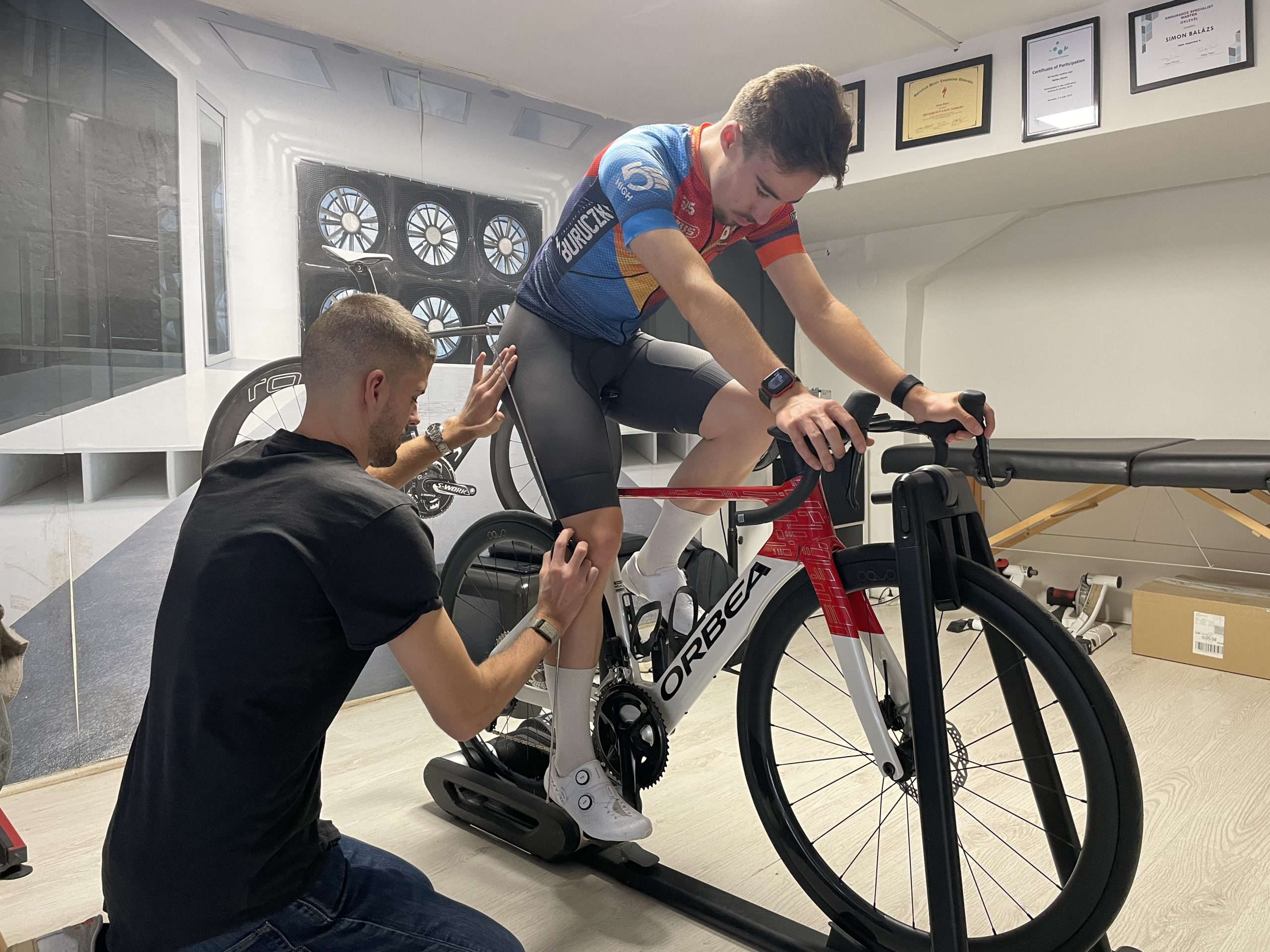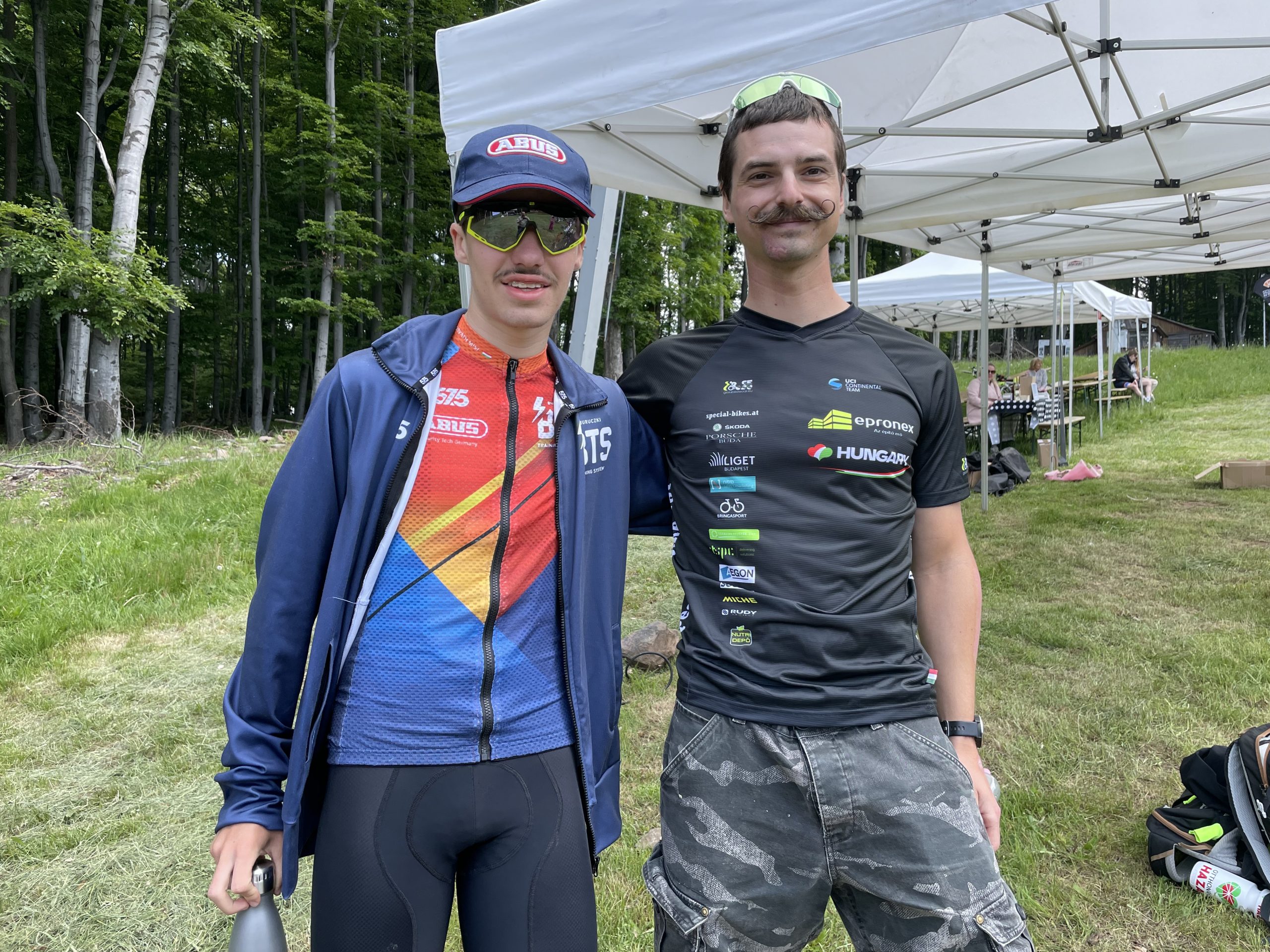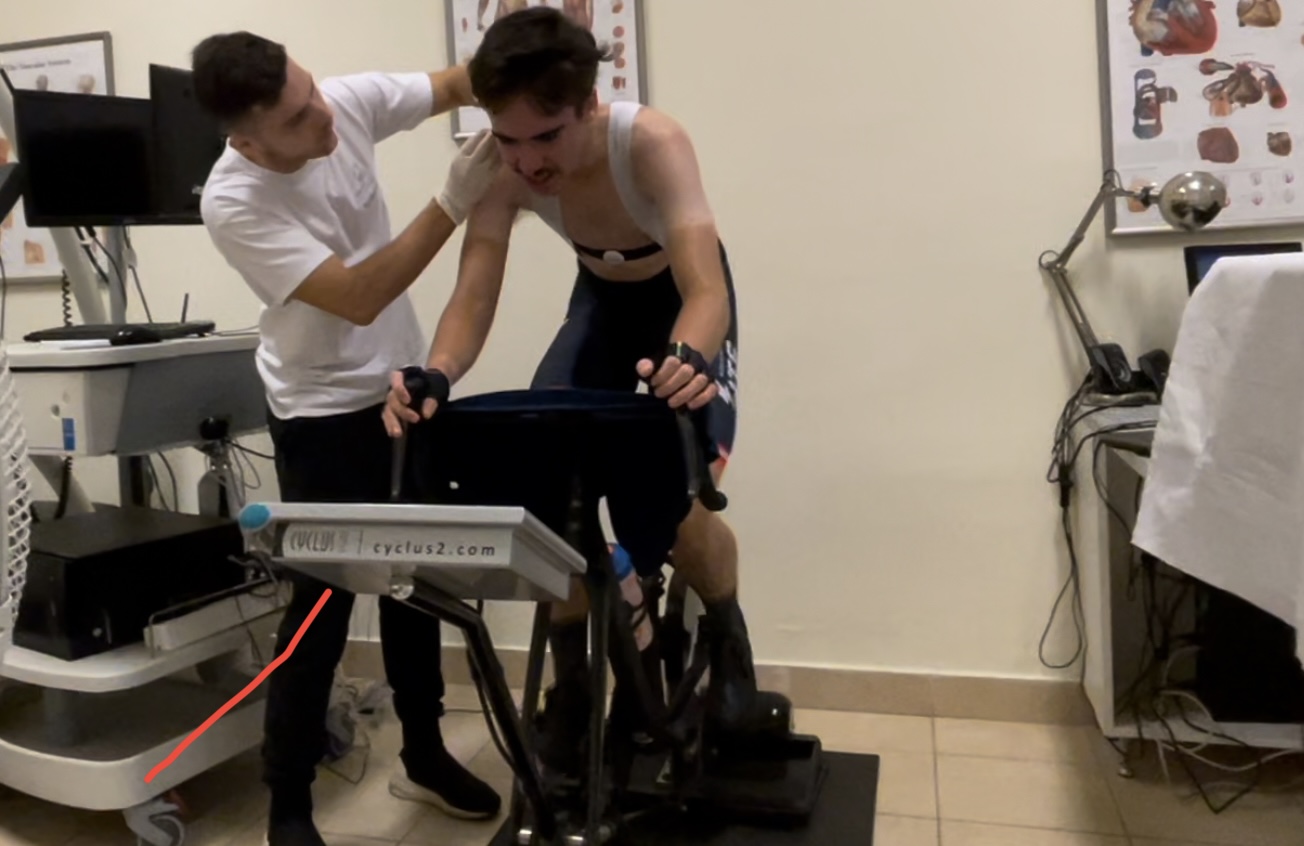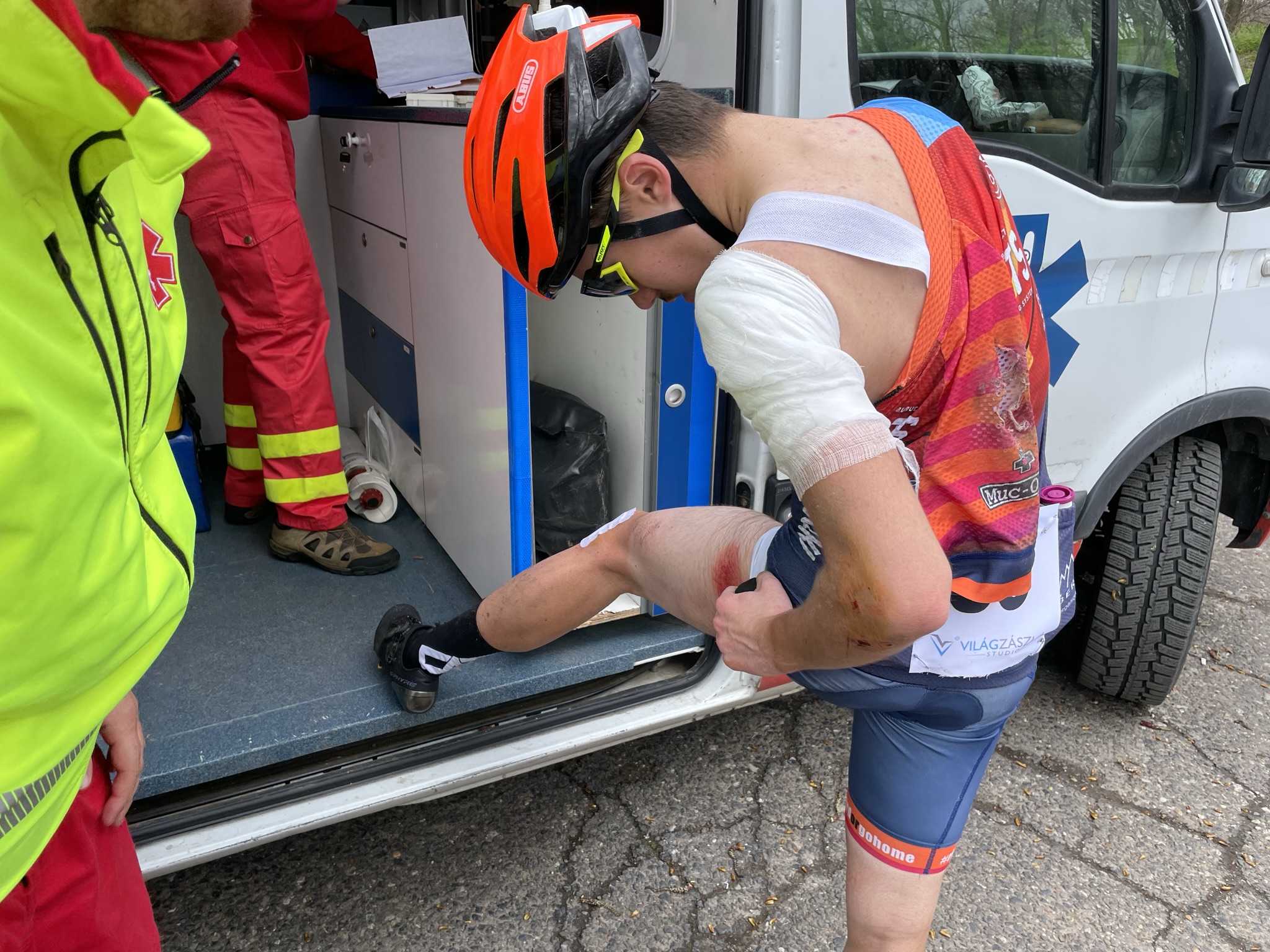Key
Experts

Bikefit
Having a good bike, one that you bought from a specialist shop where the dealer considered your height, inseam, and a few other anatomical factors, is just the starting point. To feel comfortable on the bike, deliver all the watts efficiently without injury, and still have healthy muscles and joints at 40, it’s essential that the properly sized bike is precisely fitted to you.
That’s what bike fitting is all about: setting up your bike the same way a tailor adjusts a suit to your body.
Balázs at Bringaland came highly recommended when I bought my first full-carbon bike, the Bianchi, from them. It was worth the wait of around two weeks before he could see me. You should also expect a similar waiting time, as a proper bike fit is a good 3-hour session, not just a quick seat adjustment by eye. This isn’t something you can do on an assembly line, and especially during the season, many riders are lining up for adjustments with Balázs.
There are other professionals who offer this precise setup, but many more advertise the service than are truly good at it. Balázs not only understands bikes but also anatomy, and he’s a coach and a seasoned racer himself. So you can trust that he knows exactly what you’re feeling in the saddle and how to adjust everything to achieve optimal parameters. With him, you’re not getting cookie-cutter solutions—you’re getting a real fix.
Whoever you choose for a bike fit, if they have an open slot for you the next day, either you’re extremely lucky, or there’s a reason why they’re not the most in-demand. Just a friendly tip. It’s better to wait two weeks and go to a true expert.
So far, I’ve been to two specialists for bike fitting: Balázs was one, and Zoli Bacsek was the other. Both provided the same professional and personal top-notch service. I went to Zoli because my then-coach wanted his input as well, and—surprise, surprise—Zoli’s findings were the same as Balázs’.
Why did I stick with Balázs when both were excellent? Well, because I’m a loyal person, and I started working with Balázs first.
Why do I need to go back from time to time? Since I started the sport, I’m now on my fourth bike, I’ve worn through a few pairs of shoes, and I’ve grown a few centimeters. Whenever any of these happen, it’s worth getting everything fine-tuned again.

Sports Dietitian
It always matters what you eat, but when you’re an athlete, your diet needs to be meticulously planned. You can’t race fueled by sausage, Nutella, and bananas. Of course, it doesn’t mean you have to starve or eat bland food forever—that’s exactly why you have a sports nutritionist. Their job is to create a meal plan where you can eat to your heart’s content without building up fat, while still getting stronger. And most importantly, it will include all the nutrients your body needs and nothing that will harm you.
After a thorough blood test and a detailed questionnaire, Gergő will figure out exactly what you need during an in-depth consultation. He’ll also learn about your food preferences—what you like and what you can’t stand. So, the good news is, you won’t be living off seaweed soup and dried parsley leaves. Sure, McDonald’s and cold pork knuckle won’t be part of your daily meals, but you’ll be surprised at how great the food he suggests can be.
Gergő has shown me that healthy food can also be delicious. Yes, some self-discipline is required, and there are occasional cheat days, but even with those, I eat much healthier than 90% of people (and probably more).
What I especially love is how he plans my meals before races. Gergő outlines everything from the start to the finish, detailing what to eat and drink—and when. My family is thankful too, as my mom has no interest in cooking multiple meals, so everyone in our household follows the Gönczy meal plan. My parents are grateful to Gergő for the weight they’ve lost.
And no, you really don’t have to starve. You’ll be amazed at how much you can eat when it’s the right kind of food.
One thing I haven’t mentioned yet, which I should have started with: Gergő is also a cyclist, and he races with Team Epronex. So, I couldn’t have found a more credible nutritionist!

Sport Diagnostics

Surgery
Bandages and Disinfectants
If you’re a cyclist, start getting familiar with surgeons—you’re bound to meet a few. But to avoid needing to see them for every little thing, especially when you don’t want to wait your turn behind those dealing with serious injuries like a failed parachute or a collapsed woodpile, it’s a good idea to stock up on high-quality, easy-to-use bandages and disinfectants that you can manage on your own.
Let me show you what I use. I’ve tested them, and they work well.
For disinfecting, I use OcteniSept. There’s practically no cycling injury (or very few) that you can’t spray this on as long as you’re alive. You can apply it directly to the wound, and I wouldn’t even say it stings that much. But the key benefit is that it can be used not only around the wound but directly on it. As cyclists, when we crash, we tend to scrape the pavement or dirt at high speeds. These injuries can look pretty nasty, and a lot of grime gets into the wounds. The timing and type of disinfectant you use are crucial. I highly recommend this one.
The next great product is Ialuset cream. It’s fantastic for treating abrasions that are essentially high-speed burns and infected wounds. I apply it directly to the bandage. It helps prevent further infection and promotes healing. Plus, it keeps the bandage from sticking to the wound.
Lastly, Peha-haft is a very easy-to-use bandage fixer—essentially, a self-adhering bandage. After placing the gauze on the disinfected wound, if you don’t have a fixation net, or if the area is too large for the net to cover, you can wrap it with Peha-haft. It sticks without adhesive, but it’s a good idea to secure the end with a bit of Leukoplast.
Disclaimer: None of the manufacturers of the bandages or disinfectants listed here have paid me to recommend their products; I am recommending them based on my personal experience. Everyone should consult their surgeon or general practitioner – consider the advice given here as friendly suggestions.

Sport psychologist
Sándor Nagy
The official website of Sándor Nagy, sports psychologist
As athletes, we experience a lifestyle that’s full of constant intensity and pressure. Beyond our regular daily routines, we have another life where highs and lows come at us at a rapid pace.
I’ve always considered myself a mentally healthy person. I never felt like I needed help to navigate life. Sleepless nights or unanswered questions weren’t things I dealt with, nor was I ever lost in the world. In fact, I always felt I was exactly where I needed to be. I say all this because it’s important to share that I never imagined I would ever seek the help of a psychologist.
And, when it comes to my personal life, I still don’t face issues that I can’t solve on my own. But in sports, once I reached a certain performance level, I began to feel that it might be helpful to consult a professional, just as I had done with a nutritionist to optimize my diet. Again, it wasn’t because I was struggling, but because with the guidance of a good sports psychologist, I could further optimize my performance.
How did Sándor help me?
Sometimes, according to the data, I still have energy left, but I don’t feel that way. With Sándor’s help, I’ve learned how to push past those limits.
Before and during a race, I experience countless impulses that can trigger thoughts, feelings, or even fears that I can’t allow to take hold. If I make a mistake and lose position, I can’t let the thought of that mistake keep repeating in my mind. It disrupts my focus and can lead to a chain reaction of thoughts that ends in a drop in performance. I’ve had to learn how to quickly clear my mind and use my thoughts solely to focus on how to get back into the optimal position.
Focus not on losing but on gaining. Knowing the exact moment when to hold your position and when to go all out. Not missing the moment, but also not jumping too soon. Staying cool-headed while racing with full passion.
For all of this, I asked for and received Sándor’s help.
Sándor knows my goals, my strengths, and my weaknesses, and he’s helped me manage them so I can achieve the best results, all while keeping my personal life healthy.
As athletes, we often face failure and injustice. Sándor always says that we can’t change the people around us, or how they behave toward us, or even what happens to us sometimes, but we can control how we react to these things and what we allow into our personal space. This is a skill that can be learned, and I owe him a lot for guiding me in this direction.
Sometimes we speak in person—initially, all our meetings were face-to-face—but after a while, we were able to switch to live video calls. This has made it even easier to fit our sessions into my schedule.



